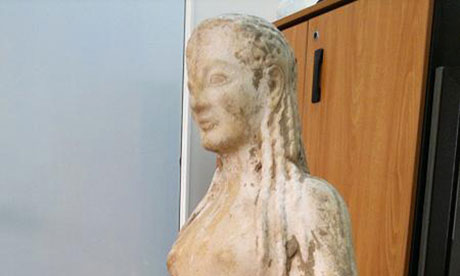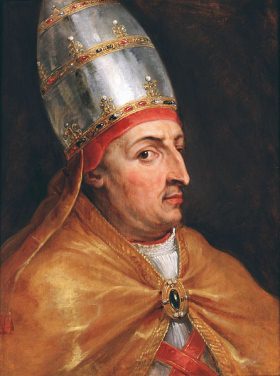Tale of ancient treasure on a road less travelled
The silk trade created its own information superhighway in China, writes Joyce Morgan.
WHEN a couple of wandering monks arrived at the court of the Emperor Justinian in the middle of the 6th century, they brought with them a hidden treasure.
Concealed in their pilgrim staffs were silkworm eggs. The monks were said to have returned from China with the means to make the coveted fabric with which the West was enraptured. It was a remarkable, and perhaps apocryphal, piece of industrial espionage.
The legendary monks had travelled along the Silk Road, or more accurately roads, a network of trade routes that linked China with the West.
For about 1000 years, caravans loaded with silk, rubies, jade, amber, musk and more travelled the Silk Road, the subject of a new exhibition at the National Museum of Australia.
From its eastern end in the ancient Chinese capital of Chang’an, now Xian, the route passed through such fabled oases as Turfan and Kashgar before branching south to India, present-day Afghanistan and Pakistan, or west to Samarkand, Bokhara, Persia and the eastern Mediterranean.
Despite all its ancient connotations, the name Silk Road is new. It was coined in the 19th century by a German geographer and explorer, Baron Ferdinand von Richthofen. A slick marketing guru could not have dreamt up a more evocative phrase.
Certainly the name is far more romantic than if it had been called after another desirable commodity traded along the way, which might have seen it dubbed the Rhubarb Road.
But silk, which originated in China, was the best known and among the most prized of the route’s merchandise. And for centuries China maintained its monopoly as the secret of silk-making was closely guarded and surrounded by myth.
The intrepid explorer Aurel Stein found evidence of one such tale last century when digging in China’s remote Taklamakan Desert – into which many once thriving oases sank after the Silk Road was abandoned as sea routes took over.
From the sands he pulled a painted wooden panel. It told the tale of the silk princess and how sericulture reached the ancient oasis of Khotan – today the centre of jade production in China’s restive Xinjiang Province.
According to legend, a Chinese princess was betrothed to the king of Khotan, a man determined to learn the secret of silk. He sent an envoy to fetch his bride, who warned her that if she wanted to wear beautiful silk robes in her new, distant homeland she would have to bring the means to make the fabric herself.
She hid silkworm eggs and mulberry seeds in her headdress knowing the border guards would not dare search there. Her venture was successful but dangerous – anyone trying to export silkworms or eggs could be condemned to death.
It wasn’t just goods that travelled the Silk Road, so too did ideas. It was the original information superhighway. The most influential idea to do so was Buddhism, which spread from its Indian birthplace and into the west of China, leaving a network of painted Buddhist caves en route at such places as Bezeklik, Kyzil and Dunhuang.
Few Silk Road caravans travelled its full length. Instead, goods changed hands several times and teams of weary men and animals were replaced. Which is one reason why the inhabitants at one end of the Silk Road knew little about those at the other. But rumours flourished.
Some in the West talked of Seres, the Kingdom of Silk, as a land of giants with red hair and blue eyes and people who lived 200 years. For centuries, the Romans thought silk grew on trees and was combed from leaves.
The wealthy middlemen, who benefited from the passing trade through their lands, were not about to put them straight.
The Roman Senate even tried to ban the gossamer fabric, regarding it as too costly and utterly indecent. The philosopher Seneca was purselipped about silk’s seductive charms: ‘‘Wretched flocks of maids labour so that the adulteress may be visible through her thin dress, so that her husband has no more acquaintance than any outsider or foreigner with his wife’s body.’’
A route through the past – and to it
THE fabric was used as currency, clothing, in religious ceremonies and for making music. Strings of twisted silk were once used for musical instruments, many of which made their way along the Silk Road.
Some, such as the Chinese pipa, a bowed instrument, are still played today.
The exhibition focuses on four cities along the route: China’s ancient capital Xian, the desert oasis of Turfan — today part of China and home to the magnificent Emin mosque — the prosperous trading centre of Samarkand and the once cosmopolitan and intellectual centre of Baghdad.
The show, from the American Museum of Natural History, evokes the spirit of the trade route through objects developed along it, from a Persian astrolabe to study the heavens to a sacred Tibetan scripture. The museum’s director, Andrew Sayers, says the exhibition is an immersive, family-oriented show.
‘‘Visitors will gain a sense of why this trade route has become famous in the story of world civilisations,’’ Sayers says.
Travelling the Silk Road: Ancient Pathway to the Modern World opens at the National Museum of Australia in Canberra today.


